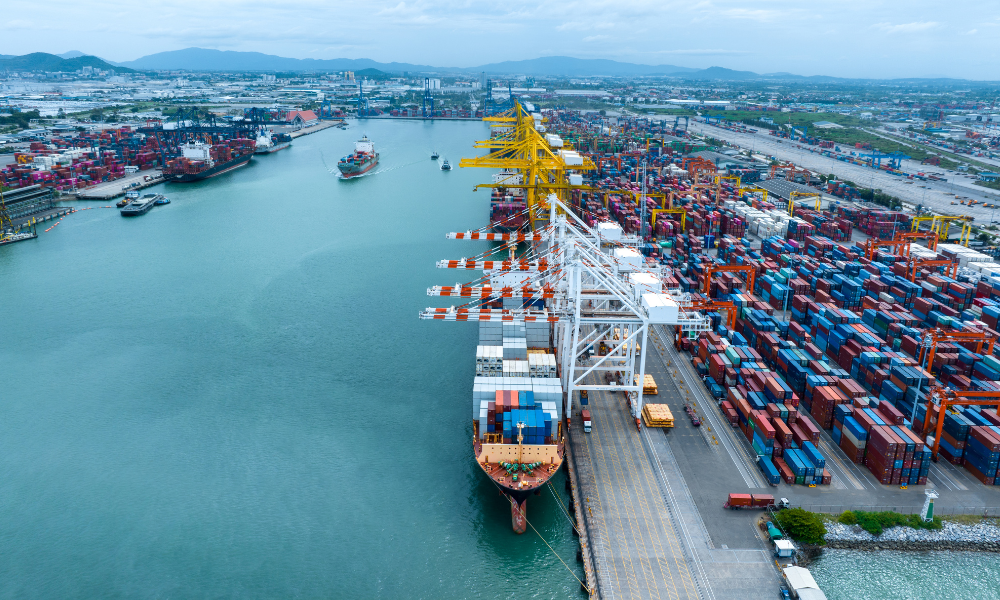This time last month, Editor-at-Large Ray Allegrezza pointed out that problems at two major ports — the Suez Canal in Egypt and the Panama Canal — would further tangle an already troubled global supply chain.
The Suez Canal is strained because of conflict in the Middle East, and water levels on the Panama Canal have caused restricted traffic.
That effect is being felt around the home furnishings industry, including in the casual category, with companies enforcing surcharges on ocean freight to make up for these conditions.
Many companies will likely have to pass on the price increases, and Casual News Now received an email from Ebel that it sent to its dealers stating just that.
“The effects of these issues are far-reaching in terms of time to receive product, securing vessel space and shipping costs as companies divert vessels and change shipping routes,” wrote Mark Bottemilller, who was then national sales manager. “The most dramatic result of these changes is in shipping rates. When we calculate shipping costs for our landed freight program, we build in a certain degree of swing in rates, but the fees that will be going into effect on Jan. 1, 2024, are beyond our ability to absorb. Consequently, we regrettably have to implement a $1,000 per container shipping surcharge until these challenges are resolved and shipping costs return to a manageable level. This charge will be added to any container that has not shipped, regardless of when the order was placed.”
Ebel could not offer further comment at this time. However, a spokesperson said the company will soon appoint a new hire who can speak more about the matter.
However, this is just one example of importers who will be affected, as the statement also explained: “It is crucial to understand that these additional costs will be incurred by dealers importing from any manufacturer, as the turmoil in the Red Sea is affecting all of us equally.”
So what will this look like over the next year? Let’s look at some facts.
Sea-Intelligence, a publication dedicated to global liner performance, has released reliability data for January 2024, showing global reliability dropped sharply because of the Red Sea impact. Only slightly more than 51% of vessels arrived on time.
Lars Jensen, an expert on container shipping, said in a LinkedIn post that pre-pandemic, normality tended to be between 70% and 80%.
“This appears to indicate a ‘contagion’ effect whereby disruptions in some services reverberate through the system and also impact non-related trades likely through changes in schedules to accommodate cargo suddenly in need of new routing and/or port-related issues,” he writes.
But for those who think this feels like pandemic-era shipping challenges all over again, Anders Schulze, senior vice president and global head of Ocean Freight, says the two cannot be compared.
He says that from 2020 to 2022 there was a demand shock where import levels increased around 20% relative to historical years. But with the Red Sea situation, there is a supply shock that has specifically impacted ocean vessel capacity.
“While the industry grapples with some of the same issues, the causes are fundamentally different,” he writes on Flexport. “Since the Covid-era supply chain crisis of 2020-2022, global ocean carriers have made major capacity additions. … Now, against the backdrop of the protracted situation in the Red Sea, these capacity and infrastructure improvements are all coming online. While these improvements have certainly helped lessen the severity of the current crisis, it’s these improvements coupled with substantially lower demand levels that have lessened the current rise in rates and transit times relative to the rates seen in the 2020-2022 period.”
Now that we’re in the middle of this, it’s hard to know what effects this will bring in the coming months. John Hunt, CEO of America’s Backyards and Outdoor Living, suggests that — if things were resolved in the Middle East by May — that means it would take about four to five months for the supply chain to catch back up.
“I don’t know that it’s going to adversely affect what people buy,” he says. “But I am interested to see what impact this will make on the upcoming High Point premarket. We should start seeing some of the normal traffic back in April, on the indoor side, and outdoor will follow that.”
In our industry, that puts things right at the beginning of the next session, which means continued delayed shipments and essentially a year of “catching up.”
Whether this is the outcome or the industry makes a speedy recovery before next season, for many, it’s just another roadblock in today’s ever-changing business landscape. And smart businesses will always be thinking about what’s next.









We never had these problems when furniture was made in America. We must go back to what worked for over 100 years. Unless we do it will only get worse.